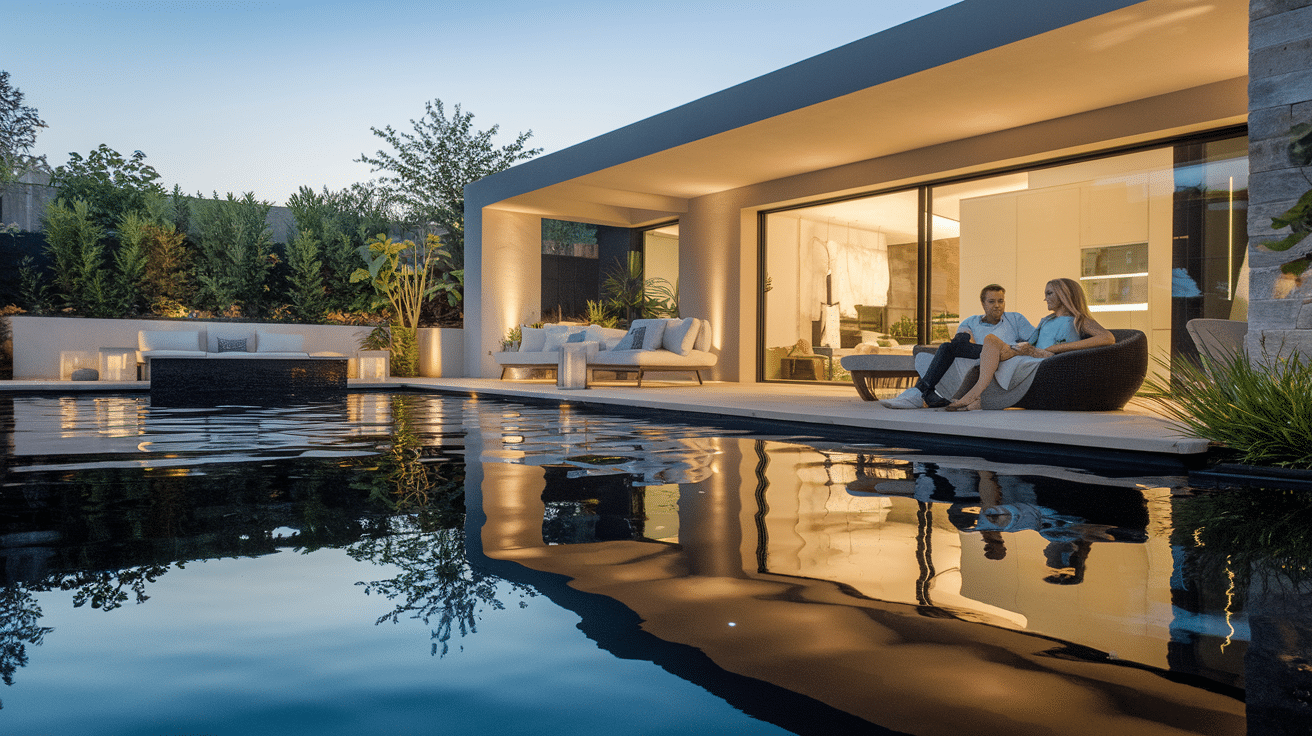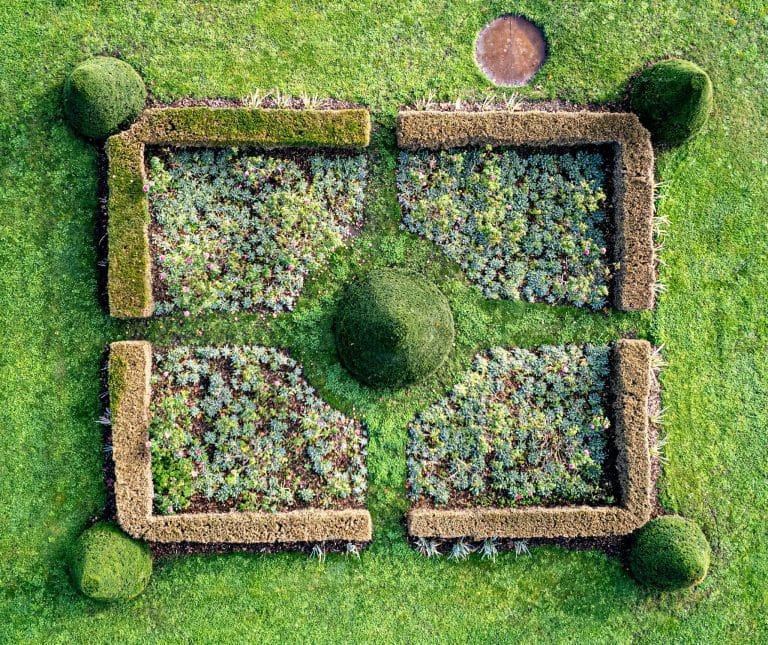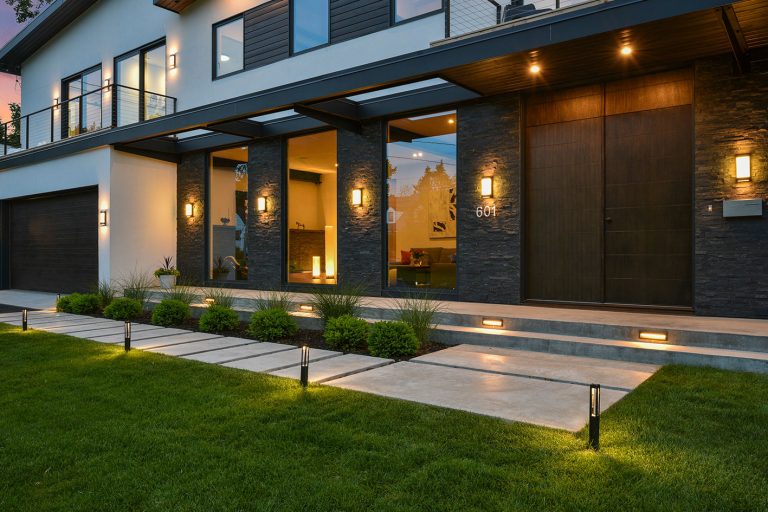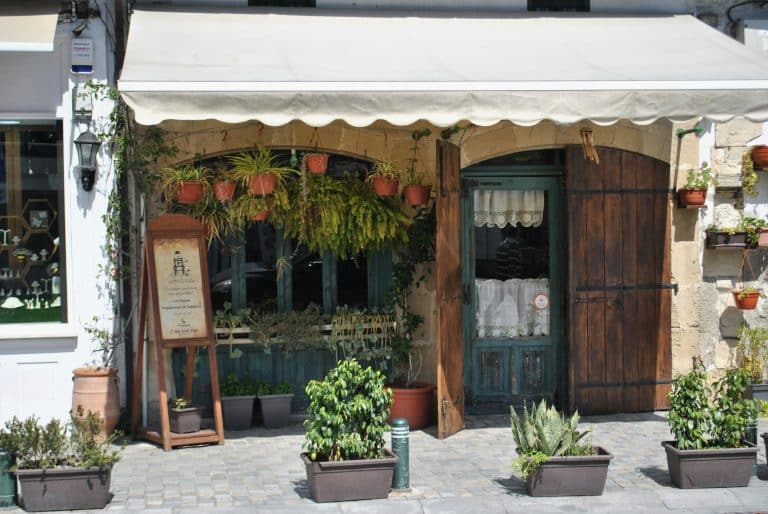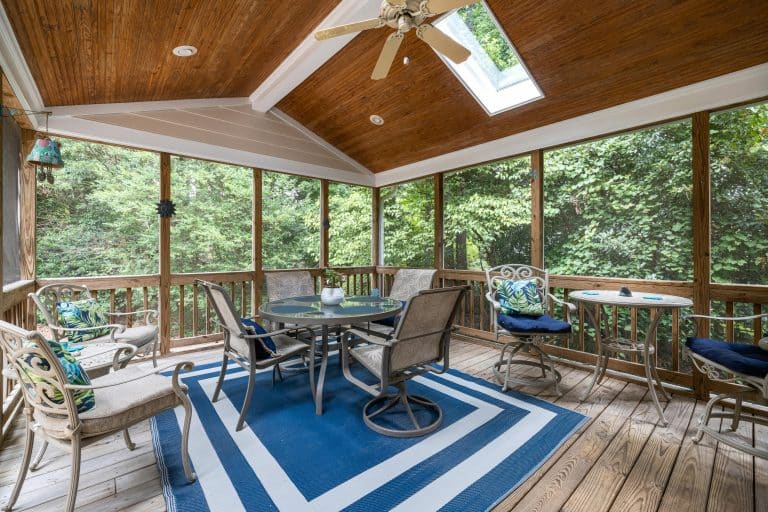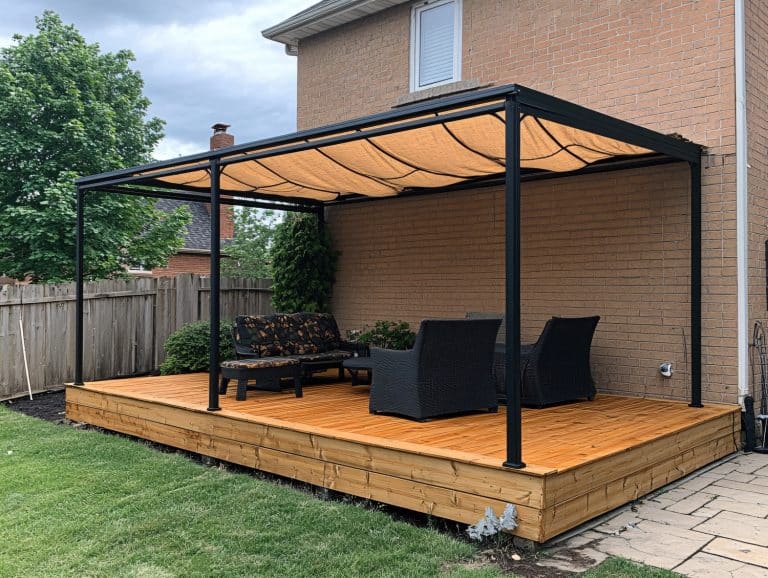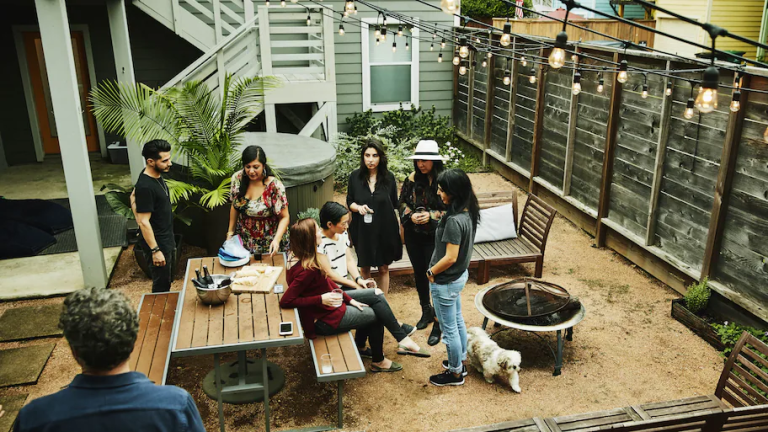Why Choose a Black Painted Pool for Your Home?
Picking the right color for your swimming pool can make or break your backyard’s look. I know many homeowners face hard choices when designing their perfect pool—with blue being the safe bet for most folks.
But have you considered a black-bottom pool? This less common option gives water a mirror-like finish and can transform your ordinary backyard into something truly special.
I’ll show you exactly how a dark-colored pool could be the perfect addition to your home.
In this guide, you’ll learn about the main benefits, potential issues, and what to consider before choosing this striking pool style—helping you decide if this bold choice matches your needs and style.
Black Pool Beauty: A Bold Choice for Modern Homes
1. Striking and Modern Beauty
A black-painted pool offers a standout look that differs from typical blue pools. The dark surface creates a mirror-like finish that reflects the sky and surroundings. This sleek, bold choice makes a statement in any backyard.
When paired with the right deck materials or stone coping, a black bottom pool can become the main focal point of your outdoor space.
2. Natural Heat Absorption
Dark colors naturally pull in more heat from the sun. A black pool bottom soaks up sunlight much better than light-colored pools. This means the water stays warm for more hours of the day.
In areas with cooler climates, this can extend your swimming season by weeks or even months.
3. Potential Energy Savings
Since black pools hold heat better, you’ll likely spend less money warming your pool water. If you use a pool heater, it won’t need to work as hard or run as often.
Over time, these savings add up, especially for homeowners in regions with higher heating costs or longer cool seasons.
4. Easier to Maintain (in Some Ways)
Dark pool surfaces hide small bits of dirt and debris better than light-colored pools. This means you might not need to vacuum as often to keep your pool looking clean.
For homes near trees or in windy areas where leaves and other items often fall into the pool, this can be a big plus for day-to-day upkeep.
Functional Benefits of Black-Painted Pools
1. Thermal Efficiency
Black painted pools work like natural solar collectors. The dark surface pulls in sunlight and turns it into heat much better than light-colored pools.
This natural warming works throughout the day as the sun shines on the water. Studies show that a dark bottom pool can be several degrees warmer than a light-colored pool in the same location.
2. Extended Swimming Season
For homeowners in places with shorter warm seasons, a black pool can add weeks or even months of swimming time. When spring arrives, the pool warms up faster than standard pools. In fall, it holds heat longer as temperatures drop.
This means you can jump in earlier in the year and keep swimming well after neighbors with light pools have closed theirs for the season.
3. Cost Savings on Heating
When your pool naturally stays warmer, you spend less money on heating costs. Pool heaters use significant energy, whether gas or electric. A black bottom pool might not need a heater at all in some climates.
In cooler areas, you’ll still use a heater, but it won’t need to run as often or work as hard. Over several years, these savings add up to substantial amounts.
Cost Considerations for Black Bottom Pools
Here is the table summarizing the cost considerations for dark bottom pools:
| Factor | Description | Estimated Cost |
|---|---|---|
| Installation | Cost of installing a dark bottom pool, including excavation, lining, and construction. | $30,000 – $60,000+ depending on pool size and location. |
| Materials (Black Finish) | Price for materials such as black pool liners or dark-colored plaster. | $2,000 – $5,000 |
| Heating | Energy costs for maintaining a warm pool due to better heat retention with dark colors. | $100 – $500 per month (depending on climate and usage) |
| Maintenance | Maintenance costs, including cleaning and pool service. Dark surfaces may reduce the frequency of cleaning. | $100 – $300 per month |
| Energy Savings | Reduced energy costs for heating, as dark bottom pools hold heat better. | Potential savings of 10-30% annually |
| Deck and Coping | Cost for deck materials like wood, stone, or tiles that complement a dark pool. | $5,000 – $20,000+ depending on material choice and size |
Creative Alternatives to a Black Painted Pool
1. Dark Blue Pools: Dramatic Appeal with Traditional Hints
Dark blue pools combine drama with familiar pool styling. They create a bold look without going fully black. The water appears deeper and more inviting against the dark blue background.
Fiberglass pool gel coats come in rich blue shades with added shimmer that catches sunlight. This extra sparkle makes the water’s surface come alive with movement and light.
These special coatings aren’t just for show – they stand up to pool chemicals and don’t fade in the sunshine. The dark blue color hides small debris better than lighter pools.
2. Gray-Toned Pools: Modern Look with Better Depth Perception
Gray-toned pools offer a modern look while making it easier to see how deep the water is. Unlike black pools that can hide the bottom, gray colors show water depth more clearly. This makes swimming safer for everyone. The soft gray shades give pools a clean, fresh style that fits well with many home designs.
They don’t heat up as much as darker colors in the sun. Gray also hides small dirt and leaves better than light-colored pools. Homeowners who want both good looks and function often choose gray tones for their backyard pools.
3. Two-Tone Pool Designs: Striking Visuals with Enhanced Safety
Two-Tone Pool Design Consider a design that uses dark colors in specific areas rather than the entire pool. For example, you could have darker colors for steps or seating areas while using a lighter shade for the main swimming area.
This gives you the striking visual impact of dark elements while maintaining safety and avoiding potential restrictions from local municipalities.
Temperature Effects of Dark Bottom Pools
Heat Absorption:
- Dark pools work like black t-shirts in sunlight
- Dark surfaces absorb heat instead of reflecting it
- Dark pool floors capture sunlight and create heat
- Heat moves into water, raising pool temperature
Temperature Difference:
- Dark pools: 2-8° warmer than light pools
- Light colors: reflect most sunlight
- Dark colors absorb light and create heat
Benefits for Pool Owners:
- Popular choice for natural warming
- Extends swim season in cool areas
- Reduces need for gas/electric heating systems
Essential Considerations Before Installing a Black Pool
- Choosing a Black Pool Without Checking Local Regulations- Before finalizing any pool design plans, contact your local building department. Some towns and cities have specific rules against dark-bottomed pools due to safety concerns. These rules exist because dark pools can make it harder to judge water depth, which might increase accident risks.
- Not Considering Climate- Think about your local weather patterns before choosing a black pool. While the extra warmth is great in mild or cool areas, it can become a problem in very hot regions. In places with long, hot summers, a black pool might heat water beyond comfortable swimming temperatures.
- Ignoring Pool Finish Longevity- Research how different dark finishes perform over time. Some cheaper dark plaster options might look great at first but fade quickly with sun and chemical exposure. Ask potential installers about the expected lifespan of various finishes and what maintenance they require.
- Not Maintaining Water Chemistry Properly- Dark pools require careful water balance monitoring. When chemicals are off-balance, scale and mineral deposits show up very clearly against dark surfaces. Proper pH levels, alkalinity, and calcium hardness need regular checking. Create a consistent testing schedule and keep detailed records to prevent issues that would be particularly visible in a dark pool.
- Skipping Professional Advice- Some homeowners try to save money by hiring general contractors without specific experience with dark pools. This often backfires, as applying dark finishes requires special skills. An experienced pool builder can guide you through material choices and installation techniques that work best for dark colors. Always ask for references and examples of previous dark pool projects before hiring.
Conclusion
Dark bottom pools offer a fresh take on the typical backyard swimming spot. They bring both style benefits and useful features that set them apart from standard blue pools.
Before making your choice, weigh both sides carefully. Consider your local climate, check if dark pools are allowed in your area, and think about long-term upkeep needs.
While challenges exist with color fading and maintenance, planning ahead can help you enjoy your dark pool for years to come. Quality materials and proper care make all the difference.
Whether you choose pure black, deep blue, or charcoal gray, a dark pool creates a special swimming spot that stands out from the crowd.
The right choice depends on your specific needs, style preferences, and swimming habits.

